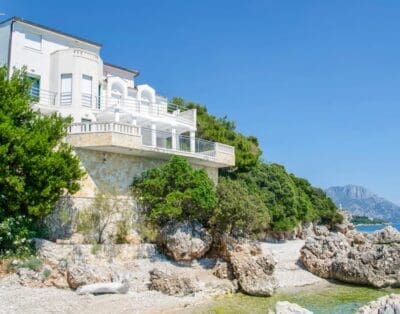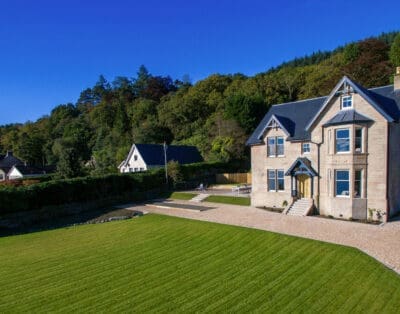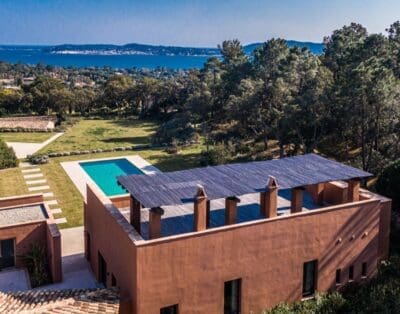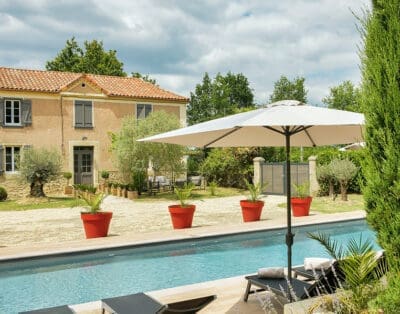Abama Resort Tenerife: A Luxurious Haven for Discerning Travellers
Tenerife, the largest of the Canary Islands nestled off the African coast, is renowned for its rich and captivating history.
The story of Tenerife dates back to prehistoric times when the Guanche people, believed to have arrived around 200 BC, established their presence on the island. The island derives its name from Chief Tinerfe, who divided the land into nine areas for each of his nine children, which still exist today as the municipal areas of Tenerife: Taoro, Guimar, Abona, Anaga, Tequeste, Taraconte, Icode, Daute, and Adeje.
In 1493, the Spanish conquest of Tenerife began, marking a significant turning point in the island’s history. The Guanches, fiercely determined to preserve their autonomy, resisted the Spanish invaders with great determination. Ultimately, Spanish dominance prevailed, and Tenerife came under Spanish control.
Tenerife’s strategic location made it a sought-after destination for explorers, merchants, and adventurers. Tenerife’s history took a dramatic turn in 1797 when British forces attempted to invade the island, led by notable figures such as Rear-Admiral Horatio Nelson and Sir Walter Raleigh. However, the locals’ unwavering determination and formidable resistance led to their triumph in the Battle of Santa Cruz.
In the twentieth century, Tenerife underwent a profound transformation driven by the growth of tourism. The construction of Tenerife North Airport in the 1930s attracted visitors seeking respite in the island’s natural splendour.
Today, Tenerife is transitioning into an upmarket cultural, historic, and artistic luxury destination. Efforts are being made to reduce the number of visitors while engaging them with sports, activities, and a luxury lifestyle that aligns with the island’s beautiful architecture, countryside, and beaches.
Leading the way in this transformation is Abama Resort & Spa Tenerife. The resort has converted a former 400-acre banana plantation into an exclusive holiday and residential golf resort, featuring Michelin-star dining and world-class service, including the five-star Ritz Carlton Hotel. Three of Tenerife’s six Michelin-starred restaurants are located in the resort, with multiple award-winning chef Martín Berasategui overseeing operations. The resort offers a total of 12 restaurants, two of which hold Michelin stars.
Beyond the realm of gastronomy, Abama Resort caters to the desires of sports enthusiasts with its highly regarded sports facilities, including Abama Golf and Abama Tennis Academy. Offering breathtaking views of the surrounding natural beauty, the resort’s meticulously sculpted golf course spans an impressive 6,271 metres, peppered with over 25,000 palm trees, white-sand bunkers, and pretty lakes connected by cascading waterfalls.
Equally impressive are the resort’s tennis and padel facilities, which not only boast exceptional amenities but also provide an unmatched setting, with the majestic Teide National Park and its iconic volcano on one side, and the sparkling waters of the Atlantic and the neighbouring Canary Islands on the other.
For those seeking a holistic approach to well-being, Abama Resort offers a comprehensive range of wellness offerings. The resort features a state-of-the-art spa and a social club at Las Terrazas de Abama Suites, where guests can indulge in rejuvenating experiences while being treated to breathtaking sunsets. Activities such as yoga and Pilates provide the perfect opportunity to unwind and recharge, immersing oneself in the tranquillity of the surroundings. Additionally, Abama Kids Camp ensures that younger guests are well taken care of.
With its uniform climate, Tenerife is an attractive destination for travellers throughout the year. The average temperature ranges from 20°C in January to 28°C in July and August, making it suitable for year-round holidays. December is the busiest time of the year, offering the opportunity to swim in the sea at Christmas.
I visited in June, staying in a luxurious suite in Las Terrazas de Abama, that has its own entrance leading to a spacious lounge and an open-plan kitchen. The private terrace featured an electric green lawn, offering an alluring golf course view. Separated by a small hall, the main bedroom, furnished with a comfortable king-size bed, leads to an en-suite bathroom with a deep immersive bath, a spacious slate shower, and twin marble sinks. The rooms are tastefully decorated with marble, soft-toned woods, and plush materials. The luxurious fittings include classic photographs, expensive vases, and bold modern lamps.
After settling in, I made my way to the beach, which was just a short golf cart ride or a pleasant 15-minute walk through the golf course, passing by the Ritz-Carlton. The resort also offers a convenient car service that can be ordered from the room or at the reception, and they even pick guests up from the beach. However, I found the golf buggy ride to be much more fun.
The beach was nestled amidst volcanic cliffs, providing a scorching sun trap and protection from the wind. To reach the beach, one could either navigate steep steps that meander down the cliff or take the funicular, which offered a breathtaking view as it glided down a monorail to the bottom. There is also an access road for cars and golf buggies if you prefer to be chauffeured.
The presence of looming craggy rocks added to the beach’s character, and there was even a bat cave to explore to one side. There is a ladder on the rocks that allows you to climb up and jump into the sea, only to climb right back out and do it all over again.
The beach is an idyllic place to relax on a sun lounger or a towel, immersing yourself in a book while enjoying the tranquillity. Various activities such as diving, surfing, bodyboarding, kayaking, and sailing can be reserved, adding to the recreational options available. Walking back from the beach, and traversing the immaculate golf course undulating lawns at sunset, provided a particularly inspiring experience.
For those interested in marine life, the southwestern region of the island, between Tenerife and La Gomera, offers opportunities to spot pilot whales and dolphins. Another must-visit attraction is “La Cueva del Viento” or the Cave of the Wind.
In the evening, I had the pleasure of dining at the Melvin Restaurant, located just a hundred meters from my suite and managed by the multiple award-winning chef Martín Berasategui. Perched high on the hill, the restaurant offers a commanding view of the resort landscapes and the sea. Its glass-slatted terrace windows gleam in the setting sun, casting a warm orange glow over the surrounding greens.
The cocktail mixologist engaged in a friendly chat, discussing various options, and I finally decided to try an Aperol Sour. A delicious masterpiece that I thoroughly enjoyed, serving as a fitting prelude to the bottle of fine champagne that followed.
The dining experience continued with a succession of marvellous Tenerife-style amuse-bouches. From ham and cheese croquettes to crispy prawns, each bite was a delight. The burrata starter was creamy and soft, and the main course of freshly caught line fish in a creamy butter sauce was rich and delicious.
After such a gastronomic evening, I retired to bed early, anticipating the highlight of the next morning—an excursion up north to witness the Corpus Christi Flower Carpets in La Orotava. This festival is truly extraordinary, even by Spanish standards, and Spain sets the bar very high for such events. And I was lucky enough to be escorted by my hosts, Jorge and Romina, who were utterly charming and great companions with which to share such a memorable trip. Special thanks go to Romina for all her efforts to arrange some innovative watersports.
The tradition of the Corpus Christi Flower Carpets began in 1847 when an elderly aristocrat named Leonor del Castillo y Betancourt first laid out a carpet of natural flowers to enhance the local celebrations. Since then, the entire town of La Orotava has come together, young and old alike, to decorate every street and plaza with exquisite floral pieces, including religious iconography, lifelike portraits, and intricate patterns. The preparation of these materials takes months, involving the drying, dying, and burning of herbs, flowers, and sand to create the necessary colours for these illuminated works of art.
Buckets filled with these aromatic herbs and multi-hued volcanic sands are scattered everywhere as people delicately draw from them and carefully place or shake them onto the cobbled streets. Metal templates are used to lay out patterns, and coloured strings are used to plan portraits. Petals of every tone and tint adorn the roads, infusing the entire town with fragrant aromas. Imagine the perfume department of Harrods scattered across La Orotava, and you’ll begin to grasp the intoxicating scents that fill the air.
The best vantage point to admire the flower carpets is from the balcony of the La Orotava Town Hall. However, wandering through the streets and observing the locals engrossed in their creative work is a fascinating experience. I recommend visiting the Church of Our Lady of Conception too. It is a superb example of baroque masonic architecture, with numerous grotesque gargoyles and hidden masonic symbols.
What strikes the casual observer most is the happy concentration of the villagers’ faces as they create these sensational drawings. Their work is demanding, especially when they must repair and complete the entire town before 7 pm on the same day. At that time, a village procession carrying religious icons will walk over each and every lovingly prepared illustration, effectively destroying them all in the process.
Jorge, the immensely likeable Manager of the Abama Resort, astutely draws a parallel between the creation and destruction of Mandalas by monks in Bhutan and the ephemeral nature of the hotel trade. He eloquently describes the artistry of the hotel industry, where every day brings the opportunity to create something of incredible quality that is destined to vanish. Each customer is satisfied, each perfect meal is served—it all must be repeated the next day. Nothing lasts, and one’s reputation hinges solely on the latest creation.
During my visit, I had the privilege of indulging in an exclusive tour of the homes of local artist aristocrats, who celebrated the day by inviting friends and esteemed dignitaries for a delightful gathering featuring hors d’oeuvres and fine local wines.
One of these extraordinary homes, Casa Cologan, belonged to Jose Alcazar and his wife, descendants of Irish merchants. Cologan is believed to be derived from Callaghan, an Irish family that settled in Tenerife in the 1700s. This residence embodies the unique Irish-Spanish aristocracy that developed on the island.
The interior of Casa Cologan is a higgledy-piggledy of studios, gardens and terraces each as individual as the next. One cottage housed Jose’s atelier and another a gorgeous classic Shadow motorbike which I was allowed to ride. Jose’s paintings cover every nook and cranny and are for sale, a mixture of landscapes, portraits, abstracts and sculptures using local volcanic stone and recycled materials.
In the artist’s own words:
“I unfold a detailed breakdown of different aspects of landscape, from the undulating curvatures of the weathered, eroded elements such as boulders (CALLADOS) that lead to refined shapes, volumes charged with sensuality and lyricism and enhanced by scale; or the charts recreated from the flow of the tides and the contours of the ground, merging lava and sea into another sea, other levels, other maps, derived from the elevation of a territory revised in the key of free artistic interpretation.”
Jose Zarate
Spanish hospitality, esteemed as the finest in the world, was exemplified by the offerings of champagne, cucumber sandwiches, and local delicacies in the exquisite garden. The pastries, sourced from the distinguished 100-year-old patisserie Egon, were a true delight. The awesome view from the garden allowed us to observe the entire town, the majestic volcano, and the sparkling sea. Numerous seating areas provided idyllic spots to unwind, read, and revel in the surroundings.
Casa Cologan also offers rental accommodations, and I highly recommend considering a stay, as the hosts exemplify old-school charm and artistry with an intimate understanding of Tenerife’s history.
Bebel, our knowledgeable social guide, adeptly orchestrated many of these experiences. She expertly matches visitors with a deep interest in local history, art, and architecture with local experts. Also highly recommended for the sort of tours that you just can’t find elsewhere.
We toured the town again, then stopped at another grand house as we had been invited by Rafael Machado to dine at his private residence, Casa Machado y Llarena, in the company of his friends and notable figures from the town.
Machado, a retired lawyer, has called this house his family home for generations. It exudes an enchanting blend of Spanish colonial architecture, with sprawling corridors, balconies, and a mesmerising open-air Moroccan-style courtyard covered with a white canvas sail for shade.
One of the unusual features of Casa Machado y Llarena was Rafael’s impressive collection of sword canes, each more ornate than the last. Additionally, the house showcased a richly painted cupola that Rafael planned to restore and transform into a gorgeous library.
Throughout the residence, classical historic paintings depicting famous battles blend seamlessly with modern sculptures—a perfect synthesis of history and contemporary art, characteristic of Tenerife. The ongoing refurbishment of the house employs natural woods and materials, infusing the space with warmth and luminosity, creating a welcoming open-plan ambience.
The buffet was served in a secondary courtyard, which came alive with a coruscating mural painted by a local graffiti artist, depicting an abundance of flowers, ferns, and indigenous fauna. The menu featured an array of traditional Tenerife dishes; Cornejo, mini roasted potatoes resembling sun-dried river stones, crispy cheese and ham croquettes, seared beef, tomato and onion salads, and slices of flavoursome chorizo that delighted the palate.
Rickety dark oak stairs zigzag along every wall, leading to different levels of the house. Ascending one such staircase brought us to the roof, lined with red roof tiles that encircled the entire residence. This sun-drenched haven provides a precious escape, offering panoramic views of the town. From this vantage point, we witnessed artists diligently painting the streets, while the entire town buzzed with anticipation as the day drew to a close. The imposing volcano loomed in the background, adding a touch of drama to the shimmering sea beneath the town.
Lunch in the enchanting courtyard was a stylish affair, with Rafael encouraging guests to mingle and interact by sitting at different tables. Attentive staff gracefully circulated, offering an enticing variety of hors d’oeuvres and beverages. My personal favourite was the mini avocado and caviar pies, washed down with sangria.
With Rafael’s fluency in Spanish, English, and French, conversations flowed effortlessly among guests, each sharing stories in their preferred language, seeking the ‘Mot Juste” to convey their experiences. Mary Cabral, our expert tour guide, proved to be a veritable treasure trove of local history and architectural insights. Her command of Spanish, English, French, and Portuguese allowed her to expound on topics ranging from weather patterns and volcanic lava tubes to climbing, sports activities, and secret locations of interest.
Casa Machado y Llarena is available for tours and dining and is a must-see.
Our drive back south over the volcano was impressive, passing through the dense cloud called ‘La Pansa de Burro,’ typically found in the island’s north. Temperature variations of over 10 degrees separate the lush, rainier north from the hotter, drier south, with the volcano acting as the dividing line. Climbing the steep mountain road from the north, we ascended amidst grey clouds at 15 degrees. However, as we reached the summit, the clouds vanished abruptly, revealing a radiant, cloudless sky with a delightful temperature of 26 degrees.
To conclude the afternoon, I returned to the beach for a refreshing swim, letting the water wash away the indulgences of the day. As evening descended, I savoured my final night at the Tagara, a brand-new restaurant in the resort that specialises in Canarian cuisine and wines. I had the pleasure of dining with Juan Manuel, the passionate and erudite manager.
Chef Andreas kindly offered to guide my culinary experience, and I gladly accepted his suggestions, as let’s face it they know best. The meal commenced with bread and a sublime honey butter, an enticing prelude to the sumptuous tuna carpaccio that followed, along with a tantalising “pulpo picante”, accompanied by three different croquettes that were both flavourful and light.
Throughout the meal, Juan Manuel’s expertise shone as he provided insights into the gastronomic provenance, the wines, and the local ingredients. The main course arrived—a succulent slow-roasted kid goat, bursting with juicy flavours. The meal concluded with homemade ice cream and flan, the former boasting a subtle density and creaminess that delighted the senses. Aimara, our attentive waitress, ensured my glass remained filled and attended to any need that arose.
The wine pairing was exquisite, with each glass perfectly complementing the flavours of its course. The dessert wine, a Canary Sack, stood out—a locally produced gem once beloved in 1880s England. Finally, a 12-year-old Glenfiddich whisky added a touch of indulgence to cap off the evening.
Tenerife proudly stands as a lively and highly sought-after tourist destination, with its pristine beaches, enchanting villages, and majestic landscapes continuing to captivate visitors. The annual Corpus Christi Flower Carpets Festival in La Orotava serves as a testament to the island’s vibrant cultural heritage.
The Abama Resort Tenerife encapsulates this remarkable culture, offering an ideal haven for golf enthusiasts and families who appreciate superb cuisine and a wide range of activities in a relaxed yet luxurious setting. With its magnificent villas and apartments nestled within meticulously landscaped gardens, the resort ensures a memorable stay. The variety of high-class restaurants, from Michelin-starred establishments to the relaxed pool bar, caters to every culinary desire, while the warmth, charm, and joy for life exhibited by the people of Tenerife leave a lasting impression.
Last, but not least, Abama also offers the opportunity to acquire villa plots and create opulent residences in prime locations overlooking their magnificent golf course, offering awe-inspiring vistas of the Atlantic Ocean and the stunning Canary Islands. As proud owners and esteemed guests, owners will have exclusive access to the state-of-the-art tennis complex, serene beachfront, and Europe’s premier golf course.
Two-bedroom apartments at Los Jardines start from € 876,000.
Abama Resort Tenerifehttps://www.abamahotels.com/en/
Corpus Christi Flower Carpets in La Orotavahttps://www.webtenerife.co.uk
Jose Zarate Atelier Casa Cologanhttps://Jzarate.com
26 Casa Machado y Llarenahttps://www.laorotava.es/en/26-casa-machado-y-lla…
Casa De Los Balconeshttps://casa-balcones.com/
Bebel – Social Network Tenerife Guidehttp://bebel.es
Mary Cabral Tourist Guide, Translator, ESL & Acroyoga Teacher.https://linktr.ee/MaryCabral
Canary Wineshttps://www.canarywine.com







